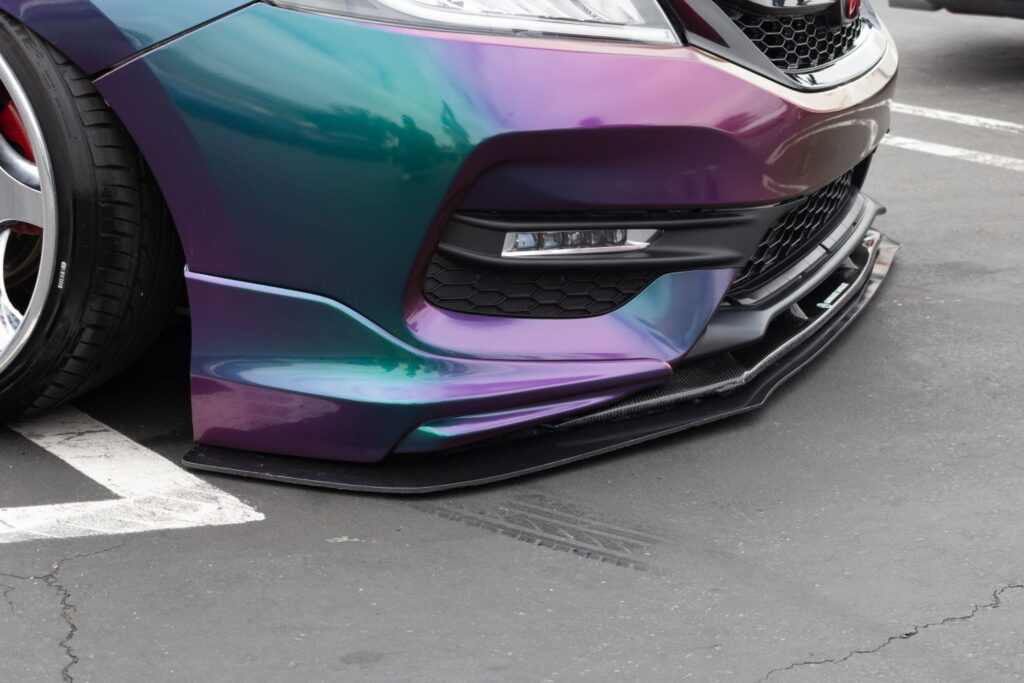Lowering a vehicle’s ride height is known to bring performance and aesthetic benefits. For example, a lowered vehicle will have a lower center of gravity and therefore better grip. It also has less aerodynamic drag because the underside of the vehicle will be more covered from the wind. A low vehicle also looks sportier. While these benefits are good, lowering your vehicle also comes with some drawbacks. Here are some examples:
Harsher Ride

A lower ride height will mean your springs will have a shorter distance to travel, which may make your ride bumpier. That said, the degradation in ride quality will depend on how much your vehicle is lowered and the type of shock absorbers you have.
Note that a harsh ride can also depend on what kind of lowering you do. Installing low-quality lowering kits may result in a harsher ride. Just heating up the springs to lower the car will make the ride even worse.
If you frequently drive on rough or gravel roads, then lowering your vehicle isn’t recommended.
Difficult Routine Maintenance
Lowering your vehicle makes routine maintenance difficult because you can’t just put a jack under it or even lift it with a lift in a shop. You have to drive up on blocks to get jacks under the vehicle or have a very lower profile jack to lift it up. Driving onto an alignment machine is a difficult task requiring lots of wooden blocks and several people to get the vehicle onto the machine due to the drive on lift with ramps.
Lowering your vehicle makes routine maintenance difficult because you can’t just put a jack under it or even lift it with a lift in a shop.
– Anthony Harlin, ASE Certified Master Automobile Technician

More Prone to Bottoming Out
If your vehicle has been lowered significantly, then normal road obstacles like curbs and ramps will seem like major issues. You might have seen some exotic vehicles with low ground clearances drive over humps extremely slowly one wheel at a time. This is done to reduce the chance of the bumper or undercarriage scraping the ground. Other components like the exhaust system are also susceptible to damage.
Poor Traction on Bumpy Roads
Vehicles with firm suspensions and low ride heights generally have better traction and cornering, but this is only true on flat roads. A bump on the road can cause your tire’s contact patch to bounce off the road surface, which can lead to you losing control of your vehicle in a high-speed corner or under hard braking.
Accelerated Wear on Suspension Components

With less suspension travel, your vehicle’s suspension components will also have less cushioning from potholes and road imperfections. This makes them more susceptible to wear and damage.
Tire Rubbing on Bodywork
Without enough ground clearance, your vehicle’s wheels can come in contact with the wheel wells or the fenders. The risk is even greater when you drive over bumps or when your vehicle is loaded with passengers or cargo.
Uneven or Accelerated Tire Wear
Lowering a vehicle can also cause uneven tire wear due to the changes in the geometry of the wheel-tire fitment.
Overall, lowering your vehicle has both pros and cons. Whether it’s right for you to lower your car would depend on how you use it, where you drive it, and your own preferences. You should consider these downsides before lowering your vehicle.
Where to Get a Lowering Kit for Your Vehicle
A lowering kit contains everything you need to reduce your vehicle’s ride height. If you’re serious about lowering your car or truck, you’ll require a kit with compatible parts of high quality to ensure durability and safety. Fortunately, CarParts.com can help you get a lowering kit suitable for your vehicle.
When you shop online for lowering kits at CarParts.com, you don’t have to guess the fitment of the parts. Plug the year, make, model, and engine of your car or truck into the integrated vehicle selector. This will bring up search results for the products in our catalog that fit your vehicle. Furthermore, you don’t have to leave home to order a lowering kit. You can use your mobile phone to visit our website, and choosing one of our products takes only several clicks. The distribution center near you will quickly process your order and ship your new lowering kit within several business days.
What are you waiting for? Customize your vehicle with a high-quality lowering kit from CarParts.com. Check out our wide selection of lowering kits today!
Any information provided on this Website is for informational purposes only and is not intended to replace consultation with a professional mechanic. The accuracy and timeliness of the information may change from the time of publication.





























